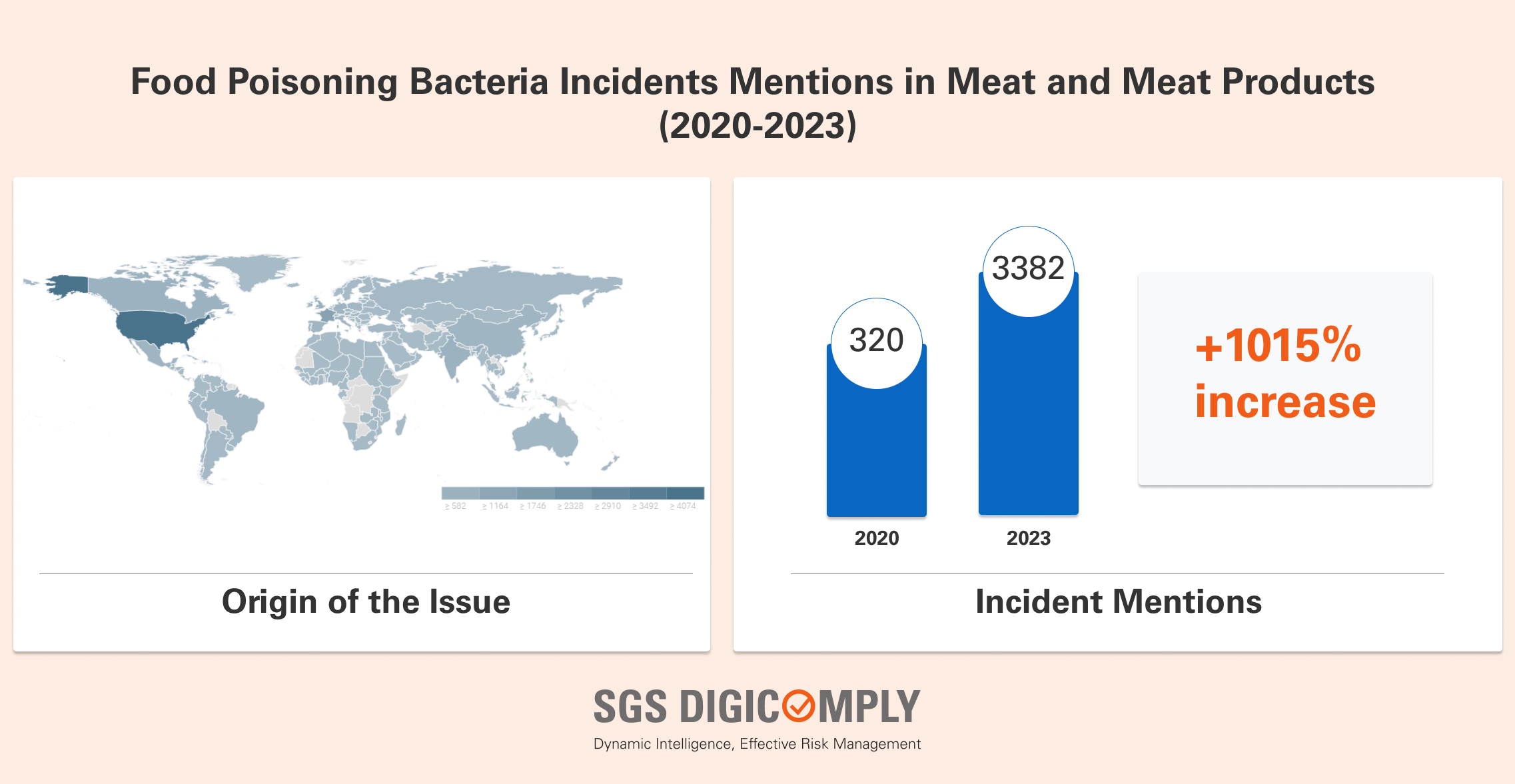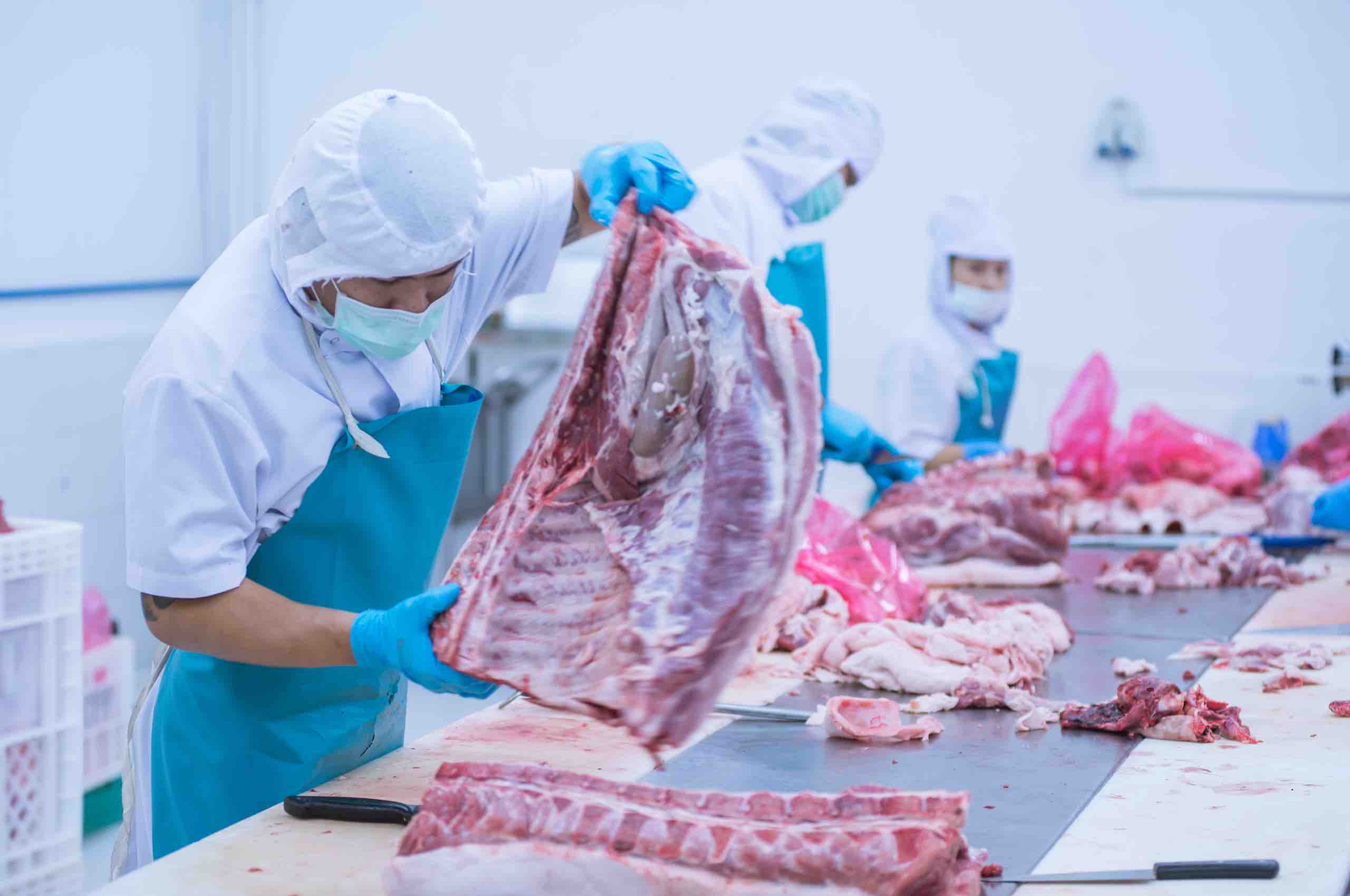Food poisoning is a significant concern in the food industry, and understanding its prevalence is crucial for ensuring public health and safety. Recent data from slaughterhouse meat inspections provides valuable insights into the detection rates of food poisoning bacteria in different types of meat.
According to the '2022 Annual Report of the Agriculture, Forestry and Livestock Quarantine Headquarters', investigations into 4,700 cases of meat from slaughterhouses revealed that food-borne pathogens were confirmed in 337 cases, resulting in an overall detection rate of approximately 7.2%. This data highlights the importance of rigorous inspection protocols to identify and mitigate potential food safety risks.
Varied Detection Rates Among Different Animal Species
The data further reveals notable disparities in the detection rates of food poisoning bacteria based on the type of animal. Among mammals, such as cattle and pigs, the detection rate was 2.3%, whereas poultry showed a significantly higher rate at 17.6%. This discrepancy emphasizes the need for tailored inspection procedures for different animal species to effectively address potential food safety concerns.
Dominant Bacterial Strains and Their Impact
Clostridium perfringens emerged as the most frequently detected bacterial strain, followed by Salmonella, Staphylococcus aureus, and Campylobacter coli. These findings underscore the importance of targeted monitoring and control measures for specific bacterial strains to reduce the risk of food poisoning.
Microorganism Monitoring in Domestic Slaughterhouses
Provincial and provincial livestock product testing and inspection agencies conducted comprehensive monitoring of microorganisms in domestic slaughterhouses, testing over 106,000 cases. While the majority of samples met recommended standards, there were 40 cases (0.04%) that exceeded acceptable levels for general bacteria and E. coli counts, indicating the need for continued vigilance in meat processing facilities.
Antibiotic and Drug Residues in Meat
Livestock product inspection agencies conducted extensive testing for antibiotic treatment drugs, anthelmintics, analgesics, anti-inflammatory drugs, and aminoglycoside antibiotics in domestically produced meat. The results demonstrated a low violation rate, with only 0.07% of cattle, 0.12% of pigs, and 0.08% of sheep (goat) showing traces of these substances. This data highlights the effectiveness of regulatory measures in minimizing the presence of harmful residues in meat products.
Ensuring Egg Safety
In addition to meat, domestic edible eggs were subject to rigorous inspection for foreign substances, deterioration, and decay. Encouragingly, no violations were detected, and all three Salmonella serotypes were absent from the samples, underscoring the success of quality control measures in the egg production process.
Addressing Crude Oil Residues
Provincial and provincial livestock product inspection agencies conducted precise and quantitative tests on farm and vehicle samples, as well as oil reservoir samples, to assess crude oil residue levels. The data revealed that while 101 oil tank samples showed no violations, 14 out of 220 farm and vehicle samples (4.4%) were in violation due to the presence of antibiotics. This underscores the importance of monitoring and addressing potential sources of contamination in the food production chain.
Conclusion: Prioritizing Food Safety through Rigorous Inspection Practices
The data from slaughterhouse meat inspections provides valuable insights into the prevalence of food poisoning bacteria and residues in meat and egg products. By understanding these trends, regulatory authorities and food producers can implement targeted measures to enhance food safety and protect public health. Continued vigilance and adherence to best practices in food production and inspection are essential for minimizing the risks of food poisoning and ensuring the well-being of consumers worldwide.
SGS Digicomply Food Safety Snapshot
In addition to the data provided in the 2022 Annual Report, it's crucial to consider the real-time insights offered by advanced food safety monitoring systems like SGS Digicomply Horizon Scanning powered by AI. We have meticulously analyzed the trend of mentions regarding food poisoning bacteria in meat and meat products, encompassing poultry and game, to gain a comprehensive understanding of the current risk landscape. The analysis reveals a significant surge in mentions: in 2020, reported mentions numbered 320, whereas in 2023, this figure skyrocketed to 3,382. This represents an astonishing growth of 1015%, underscoring the imperative for heightened vigilance across all stakeholders within the food supply chain. For a more comprehensive view, explore SGS Digicomply platform now.






.webp?width=1644&height=1254&name=Food%20Safety%20Dashboard%201%20(1).webp)
